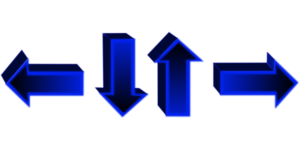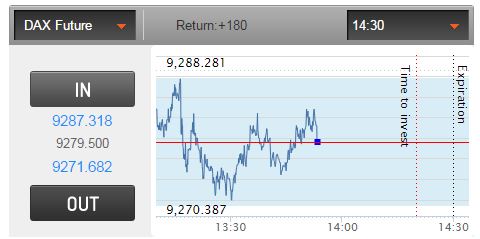
Binary options come in different shapes and sizes. There are four main types, and in this first article we will look at Digital and Range options - what their main features are and when the market conditions are most favorable for using them.
Digital Options
Also called Put/Call, High/Low and Up/Down options, they are the most common options and the simplest. Traders simply have to make a decision on where the price will move from the moment of the trade, to the end of the expiry period they've selected.
Various expiry periods are available here, but the most typical are hourly options. This doesn't mean they start and end only at the turn of the hour – most brokers offer them every 15 minutes. The most traded options are for currency pairs involving USD, EUR, GBP and JPY, as well as gold and oil. As they have the largest number of traders, binary brokers are motivated to offer the largest payouts for them.
They are traded throughout market hours, but it can be said that major events attract more attention, as the movements then are more pronounced and perceived as easier to analyze and predict.
One important note is that Turbo options, often found under tabs named “60 seconds” or similar, are essentially digital options, but their duration is shrunk to anywhere between 15 seconds to five minutes. Generally, they have smaller payouts compared to their “longer” brothers, but some brokers offer as high as 81% for a one minute option. Traders don't select them at particular times of the market, as their short time-frames almost always see some action.

Range Options
Range options, that are widely known as Boundary or Tunnel options, work somewhat differently. Here there are two price levels at equal distances to the current price. In this option type, winning is achieved if and when the price remains within the upper and lower boundaries. There are two varieties of these options in terms of how the price behaves during the duration of the option.
Some brokers opt for the more trader-friendly types where the price can go out of the preset range without it triggering a loss. Here the importance is placed on where the price is AT the expiry time, not before it reaches it. Other brokers take the more strict approach and count the trade as a loss for users if it as much touches the range barriers. As this is a vital difference, we advise anyone who is trading them to research what their broker is offering, as this influences strategies and may make the difference between a win and a loss.
This type of binary options is still quite suitable for markets that are trading within a range and where there isn't much action. Most enter them when a resistance or support level has been reached and the bounce in the opposite direction starts.











